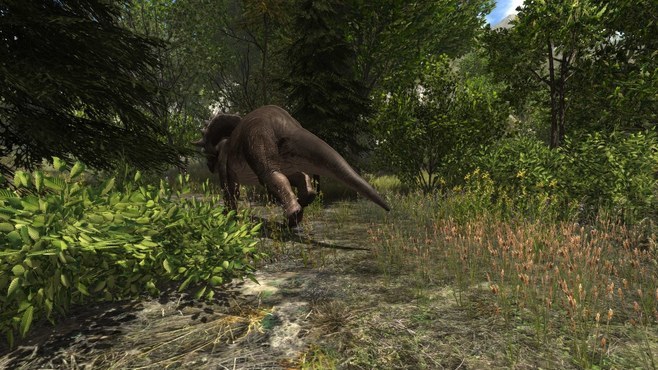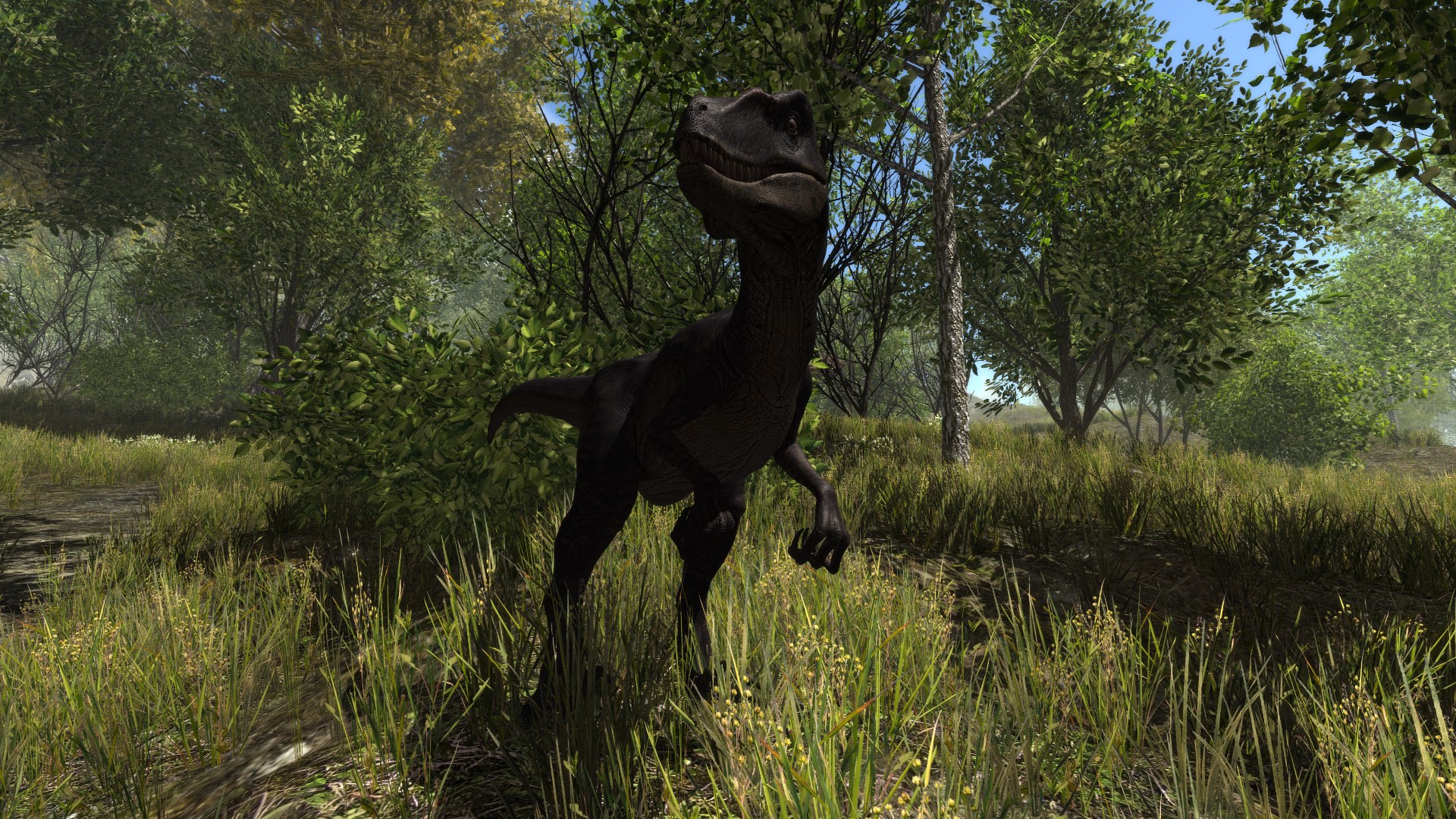Dinosaur Forest
Dinosaurs are a rare but important portion of the fossil fauna of Petrified Forest National Park. Park sediments preserve fossils of the Late Triassic 'dawn of the dinosaurs' when these animals first appeared worldwide. In contrast to the large sauropods, horned dinosaurs, and the famed Tyrannosaurus rex of the later Jurassic and Cretaceous periods, the Triassic dinosaurs of Arizona were mainly small, bipedal carnivores no bigger than a human in size. Unlike their descendents which filled every terrestrial ecological niche, the dinosaurs of the Triassic shared the landscape with other types of predatory reptiles, most notably the crocodile-like phytosaurs and rauisuchians.
In direct competition with these other voracious predators, the small dinosaurs evolved characteristics that would allow them to compete for prey. These evolutionary developments included characters of the pelvis and ankle which allowed the animals to keep their legs straight under their body for a bipedal stance and greater running ability. The front limbs were now free for uses such as grasping prey. Evidence also suggests that these early dinosaurs may have traveled in packs allowing them to bring down larger prey including the large cow-like dicynodont Placerias and even the armored aetosaurs such as Desmatosuchus. It is also very likely that these predators were generalists and scavenged carcasses for food as do many carnivores today.

Most visitors to the park are surprised to hear that dinosaur fossils are rare finds in the park. This rarity is most likely due to aspects of fossil preservation and not due to a scarcity of dinosaurs in the Triassic. These early dinosaurs were small and possessed hollow bones, the same as modern birds. When an animal died its bones were subject to scavenging by other animals as well as exposure to wind and rain, breaking them down before they were buried. As a result small, hollow bones were less likely to be preserved than the bones of larger reptiles with solid bones.
Dinosaurs in the Woods. Elberta, Alabama In 1991 Mark Cline was building dinosaurs outside his Enchanted Castle Studios in Natural Bridge, Virginia. A man driving a beat-up pickup truck, wearing ratty clothes, stopped and said that his brother-in-law might be interested in buying dinosaurs as 'lawn ornaments.' Dinosaur World Florida is a great destination for groups and large parties of all sizes. Join us for a magical journey of exploration and wonder in our prehistoric playground.


However, our knowledge of Triassic dinosaurs in the American Southwest is on the rise as paleontologists are successfully targeting areas of the correct age and depositional environment most likely to preserve dinosaur bones and discovering more dinosaur material in the park.
Petrified Forest National Park Late Triassic Dinosaur Taxa List
Chindesaurus bryansmalli (Theropoda)
Coelophysis sp. (Coelophysoidea)
Prehistoric Forest
Chinle Formation, Northeastern Arizona, Late Triassic Dinosaur Taxa List
Camposaurus arizonensis (Coelophysoidea)
Chindesaurus bryansmalli (Theropoda)
Coelophysis bauri (Coelophysoidea)
Tawa hallae (Theropoda)
Daemonosaurus chauliodus (Theropoda)
Dinosaur Forest Michigan
Dinosaurs are among the most popular and iconic fossil organisms, and dinosaur bones and tracks are favorite attractions at several National Park Service units. In recognition of this status, my coauthor Vince Santucci and I prepared an inventory of NPS dinosaurs, due to be published before the end of 2018. [Note: This inventory, An inventory of non-avian dinosaurs from National Park Service areas, is complete and available online.]
As of September 2018, body and trace fossils of non-avian dinosaurs have been documented from at least 21 NPS areas. There are also two NPS areas that are associated with historically significant finds, two NPS areas where dinosaur tracks have been incorporated into building stone, one equivocal report of dinosaur fossils, and one case where dinosaur fossils have been found immediately outside of a NPS area. Together, these fossils document dinosaurs from the Late Triassic (approximately 210 Ma; million years ago) to the end of the Cretaceous (66 Ma). This encompasses everything from some of the earliest known dinosaurs of North America, to desert trackmakers of Early and Middle Jurassic age, to giant sauropods and plate-backed stegosaurs of the Late Jurassic, to as-yet poorly known Early Cretaceous and early Late Cretaceous forms, to tyrannosaurs and titanosaurs at the end of the Cretaceous. Geographically, this record spans across the continental United States, from Big Bend National Park in Texas to Springfield Armory National Historic Site in Massachusetts, and up to Denali National Park and Preserve in Alaska. but is centered on the Colorado.
